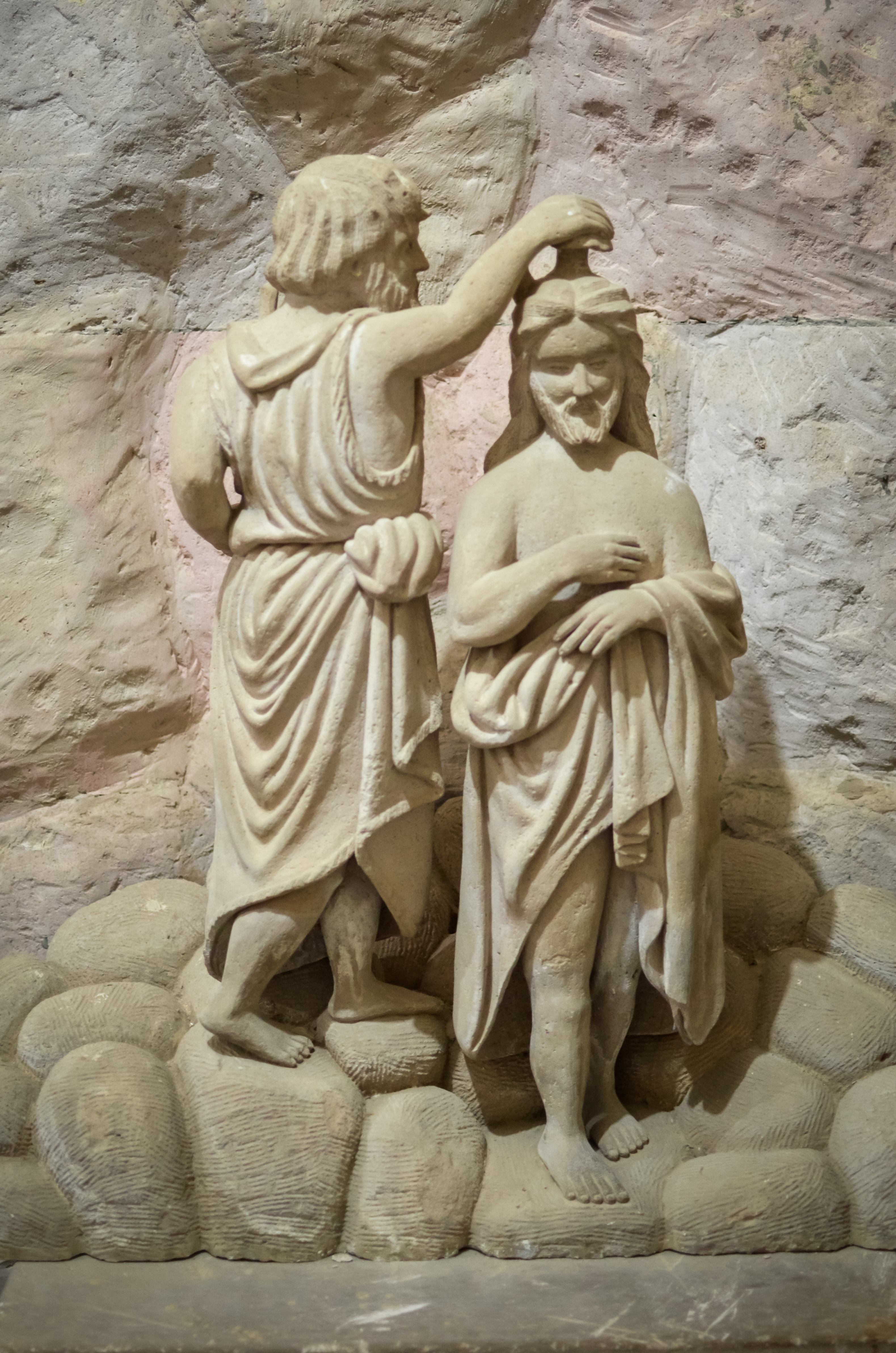We are barely out from under the sparkle of Jesus’ coming at Christmas, and the Gospel reminds us of WHY Jesus came: to take away the sins of the world. He is the Word made flesh, Who is the Lamb of God. There is a three-fold significance to this title for Jesus.
1) For the Jewish people, the lamb is the price to be paid for sin, being sacrificed twice a day as expiation. So, as “Lamb of God,” Jesus comes as the sacrifice for sin. Today’s Responsorial Psalm is like a hymn of Christ to the Father: “Here I am, Lord; I come to do your will… Holocausts or sin-offerings you sought not; then said I, ‘Behold, I come.’”
2) The primary holy day for Jews is Passover, when each family sacrifices and eats a lamb to recall and relive their liberation from slavery in Egypt. So, as “Lamb of God,” sacrificed and consumed, Jesus comes as a sign of God’s merciful love, as the One who saves and sets free.
3) In the Old Testament, the prophets often described the coming Messiah as a lamb going meekly to slaughter, to take the sins of the people on himself. So, as “Lamb of God,” Jesus comes as the long-awaited Anointed One, who will make all things right at last.
John the Baptist gives witness to something extraordinary: a man came forward to be baptized, and a dove came down from heaven and hovered over him. John is eager to share this event with others, making clear that he was told beforehand that this would be the sign of the one who would come to baptize with the Holy Spirit. John does not keep this information to himself, but boldly makes a solemn statement as he points Jesus out to his followers: “Now I have seen and testified that he is the Son of God.”
This Gospel reminds us that from the very beginning of his ministry, Jesus was described as the Son of God, the Lamb of God who takes away the sins of the world, the one who existed before all time. Some of the disciples of John understood the significance of this and followed after him immediately! Others took some convincing. Others would never accept the Truth while he was still alive.
How would I have understood these words? What would I have done in response? John gives us an example to follow. He sees Jesus “coming toward him,” and he shares freely what he sees. What a beautiful meditation these words are, as Jesus is always coming toward us, never moving away from us! It is up to us to watch, listen, receive, and then, like John, testify to what we have seen! Boldly!
Apenas hemos salido del resplandor de la venida de Jesús en la Navidad, y el Evangelio nos recuerda POR QUÉ vino Jesús: para quitar los pecados del mundo. Él es el Verbo hecho carne, el Cordero de Dios. Hay un triple significado en este título.
1) Para el pueblo judío, el cordero es el precio a pagar por el pecado, siendo sacrificado dos veces al día como expiación. Entonces, como “Cordero de Dios”, Jesús viene como el sacrificio por el pecado. El Salmo Responsorial de hoy es como un himno de Cristo al Padre: “Aquí estoy, Señor, para hacer tu voluntad… No exigiste holocaustos por la culpa, así que dije: ‘Aquí estoy’”.
2) El día más sagrado para los judíos es la Pascua, cuando cada familia sacrifica y come un cordero para recordar y revivir su liberación de la esclavitud en Egipto. Así, como “Cordero de Dios”, sacrificado y consumido, Jesús viene como signo del amor misericordioso de Dios, como Aquel que salva y libera.
3) En el Antiguo Testamento, los profetas describieron a menudo al Mesías venidero como un cordero que va mansamente al matadero, para tomar sobre sí los pecados del pueblo. Entonces, como “Cordero de Dios”, Jesús viene como el Ungido largamente esperado, quien finalmente arreglará todas las cosas.
Juan el Bautista da testimonio de algo extraordinario: un hombre se adelantó para ser bautizado, y una paloma descendió del cielo y se cernió sobre él. Juan está ansioso por compartir este evento con los demás, dejando en claro que se le dijo de antemano que esta sería la señal del que vendría a bautizar con el Espíritu Santo. Juan no se guarda esta información para sí mismo, sino que audazmente hace una declaración solemne cuando señala a Jesús a sus seguidores: “yo lo vi y doy testimonio de que éste es el Hijo de Dios”.
Este Evangelio nos recuerda que desde el comienzo mismo de su ministerio, Jesús fue descrito como el Hijo de Dios, el Cordero de Dios que quita el pecado del mundo, el que existía antes de todos los tiempos. ¡Algunos de los discípulos de Juan entendieron el significado de esto y lo siguieron inmediatamente! Otros tardaron un poco en convencerse. Otros nunca aceptarían la Verdad mientras él aún estuviera vivo.
¿Cómo habría entendido yo estas palabras? ¿Qué hubiera hecho en respuesta? Juan nos da un ejemplo a seguir. Ve a Jesús “que venía hacia él”, y comparte libremente lo que ve. ¡Qué hermosa meditación son estas palabras, ya que Jesús siempre viene hacia nosotros, nunca se aleja de nosotros! Depende de nosotros observar, escuchar, recibir y luego, como Juan, ¡dar testimonio de lo que hemos visto valientemente!
 Kathryn Mulderink, MA, is married to Robert, Station Manager for Holy Family Radio. Together they have seven children (including Father Rob), and four grandchildren. She is President of the local community of Secular Discalced Carmelites and has published five books and many articles. Over the last 30 years, she has worked as a teacher, headmistress, catechist, Pastoral Associate, and DRE, and as a writer and voice talent for Catholic Radio. Currently, she serves the Church by writing and speaking, and by collaborating with various parishes and to lead others to encounter Christ and engage their faith. Her website is www.KathrynTherese.com
Kathryn Mulderink, MA, is married to Robert, Station Manager for Holy Family Radio. Together they have seven children (including Father Rob), and four grandchildren. She is President of the local community of Secular Discalced Carmelites and has published five books and many articles. Over the last 30 years, she has worked as a teacher, headmistress, catechist, Pastoral Associate, and DRE, and as a writer and voice talent for Catholic Radio. Currently, she serves the Church by writing and speaking, and by collaborating with various parishes and to lead others to encounter Christ and engage their faith. Her website is www.KathrynTherese.com
Feature Image Credit: Cristian Gutiérrez, LC, cathopic.com/photo/10009-bautismo-de-jesus

